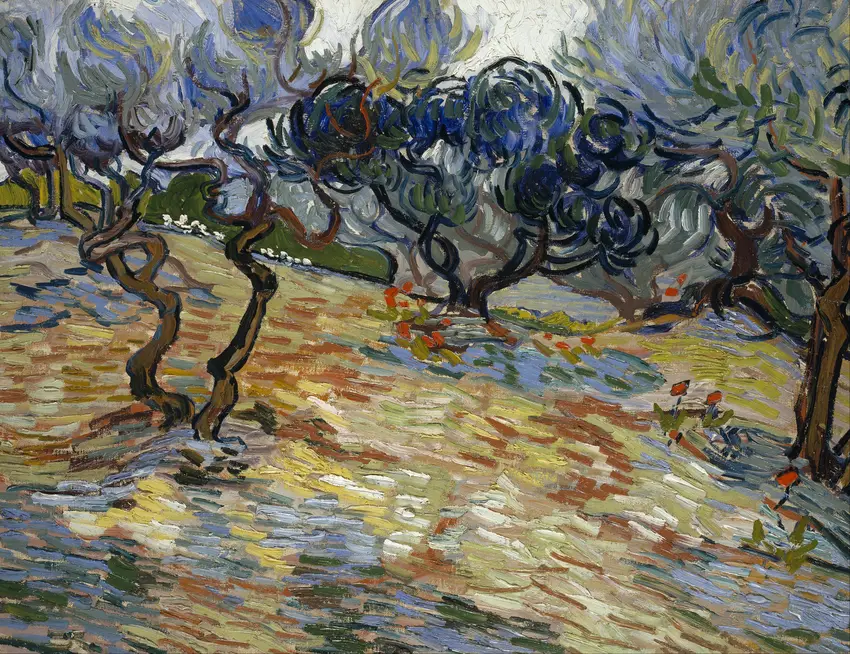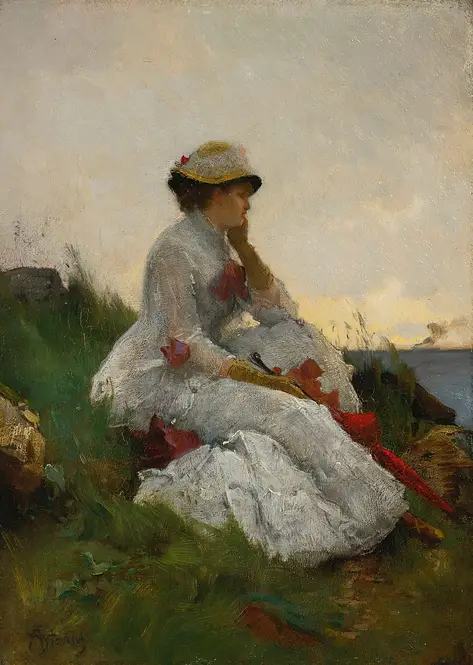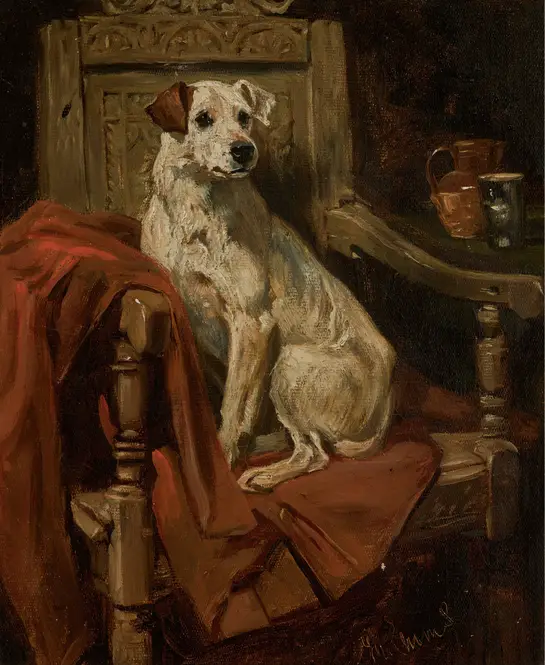Childe Hassam’s Improvisation (1899) bursts with a vibrant energy that feels almost musical, as if the brushstrokes themselves were dancing to an unseen rhythm. The painting captures a fleeting moment of spontaneity, with bold, loose strokes of color blending into one another like notes in a jazz improvisation. Hassam’s mastery of light and movement transforms what might seem chaotic into a harmonious visual symphony, inviting viewers to lose themselves in its dynamic flow. There’s an undeniable sense of freedom here—a departure from rigid realism, embracing instead the raw emotion of the creative process.
What makes this piece particularly fascinating is how Hassam balances structure with abandon. While the composition feels unrestrained, subtle hints of form emerge from the swirls of pigment, suggesting landscapes or figures without fully defining them. The interplay of warm and cool tones creates depth, pulling the eye across the canvas in a way that feels both deliberate and effortless. It’s a testament to Hassam’s ability to capture the essence of a moment rather than its literal details, leaving room for interpretation and imagination.

-full.webp)
-full.webp)




 (1892)-full.webp)
-full.webp)
-full.webp)